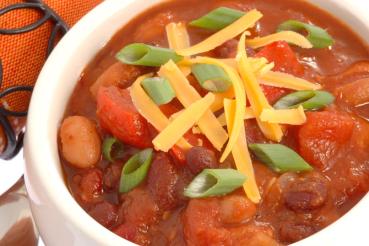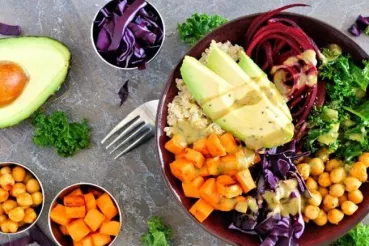Whether the label says it's a breakfast, workout recovery or meal replacement bar, how smart is it to get 300 to 400 calories from something that looks suspiciously like a candy bar?
"Depending on the bar it may make sense," says Rush dietitian Jennifer Ventrelle, MS, RD, LDN.
"When the alternative is getting no nutrition at all, it's better to opt for a quick fix like a nutrition bar, but you have to read the label. Some bars are really high in sugar, sodium or saturated fat, so you need to take care when choosing."
A good rule of thumb is to choose a bar with between 100 to 150 calories for a snack and a bar with between 200 to 350 calories if the bar is going to replace a meal.
"In addition, you shouldn't have a meal replacement bar more than once a day," says Ventrelle.
Reading the label
"I can't emphasize enough the importance of reading labels and being aware of the nutrition profile of what you're eating," says Ventrelle.
When choosing a bar, avoid those with the following:
- Hydrogenated oils
- High fructose corn syrup
- High concentrations of saturated fat (more than 1 gram saturated fat per 100 calories)
- High sugar content (more than 10 grams of sugar per 100 calories)
"I recommend avoiding bars with a lot of sugar or high fructose corn syrup," says Ventrelle. "Look at the list of ingredients on the label. If either sugar or corn syrup is listed in the first three ingredients, you'll probably want to choose another bar, because the ingredients are listed in order of what ingredients are most prevalent."
You should also be aware of the fat content of the bar, especially saturated fat.
"You don't want more than one gram of saturated fat for every 100 calories in a bar," says Ventrelle. "For example if there are 150 calories, you don't want a bar with more than about 1.5 grams of saturated fat — if it's a meal replacement bar and there's 300 calories, you can feel comfortable with about 3 grams of saturated fat."
The profile for a typical nutrition bar for a snack should be around:
- 100 to 150 total calories
- 15 total carbohydrates
- 7 grams protein
- 3 grams of fiber
The profile for a typical nutrition bar to replace a meal should be around:
- 200 to 350 total calories
- 30 total carbohydrates
- 14 grams protein
- 5 grams of fiber
Look at the list of ingredients on the label. If either sugar or corn syrup is listed in the first three ingredients, you'll probably want to choose another bar.
Don't forget your fruit
"I also highly recommend having a piece of fruit along with your nutrition bar," Ventrelle says. "Fruit can be just as convenient as a nutrition bar, and it also adds a great deal of nutrition and fiber.”
In fact, there are many times when whole foods, like fruits and vegetables, can be just as convenient as a bar for a snack. You can easily stash an apple, pear or orange in your desk, or pack a bag of veggies like baby carrots, pepper slices or zucchini sticks in your purse or bag.
Be savvy
Ventrelle cautions against buying into advertising and marketing tactics. "It may say 'weight loss' on the bar, when in fact it's just smaller version of the regular bar," she says.
"It has the same ingredients, but you're just getting less. You are getting fewer calories, of course, but it may be less satisfying than a bar truly designed for weight loss.
This is why it pays to take the extra step and read the label to make sure you're getting the most nutritional bang for your buck.




